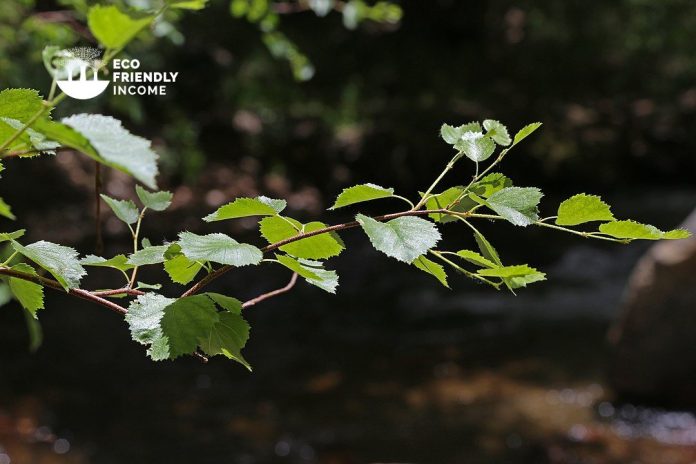
Featured Photo by Dcrjsr / CC BY 4.0
A field guide on how to identify and propagate Water Birch (Betula occidentalis), a hardy tree that is native to western & central North America.
How to Identify Water Birch (Betula occidentalis)
Leaves
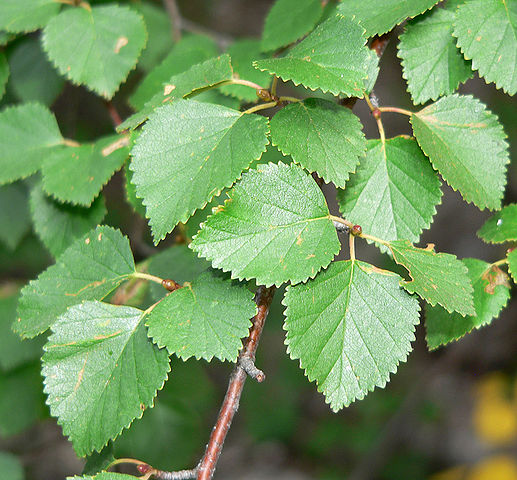
Water birch leaves are ovate-shaped, with doubly-serrated margins, and grow in alternate arrangements along the stems.
Bark
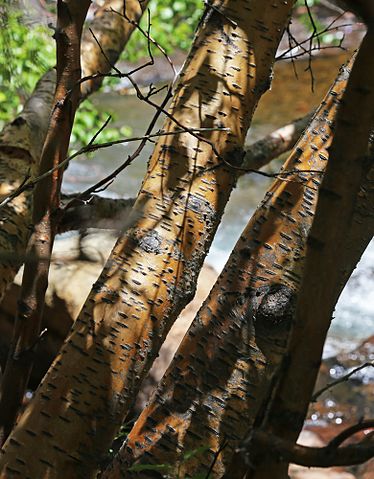
The bark of water birch is reddish-brown and smooth, with horizontal lenticels (small, raised pores).
Catkins
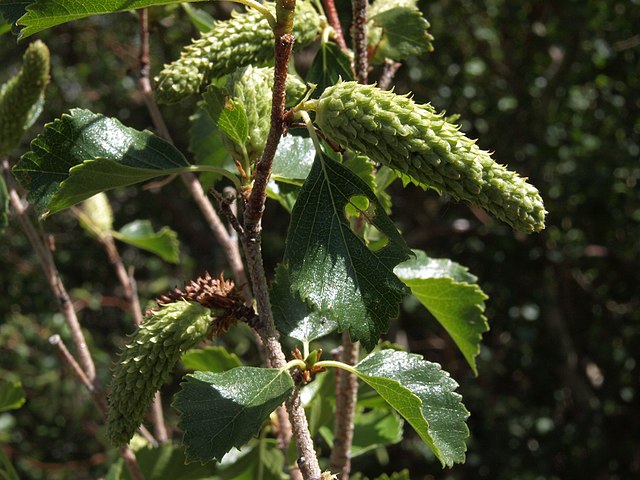
Water Birch catkins are typically yellowish-green in color, and can reach anywhere from 1-4 inches in length.
The flowers are composed of many tiny, petal-less flowers and are wind-pollinated.
The catkins are made up of overlapping bracts that contain either male or female flowers.
Male flowers have long, yellow stamens that release pollen, while female flowers have short stigmas that receive the pollen.
Flowering Season
Catkins appear in the spring, and the tree produces small, triangular-shaped seeds in the fall.
Habitat
Betula occidentalis trees are typically found in moist, cool climates and in areas that receive at least moderate rainfall.
They occur in both lowland and mountainous regions and often grow in riparian zones, near streams or other bodies of water.
Betula occidentalis is also found in boreal forests, including those of the Pacific Northwest.
They can also be found in open woodlands, often in association with coniferous species like Douglas-fir and western hemlock.
Some other understory plants that associate with water birch are:
- Shrubby Cinquefoil (Dasiphora fruticosa)
- Solomon’s seal (Maianthemum stellatum)
- Redosier Dogwood (Cornus sericea)
- Creeping Juniper (Juniperus horizontalis)
Wildlife Value
Water Birch is an important food source for a variety of animals, including white-tailed deer, black bear, snowshoe hare, red squirrel, and grouse.
They also provide shelter and nesting sites for birds and other wildlife.
The bark of these trees is an important winter food source for snowshoe hares, and the buds and catkins are an important source of food for squirrels.
The trees also provide good habitat for a variety of other species, such as amphibians, reptiles, and insects.
How to Propagate Water Birch (Betula occidentalis)

Hardiness Zone: 4-6

Soil Type: Well-drained chalk, clay, loam, sand.

Water: Normal to High.

Exposure: Full Sun to Partial Shade
If you are interested in adding water birch to your landscape, there are a few different ways that you can propagate it.
Here are some tips for identifying and propagating water birch:
1. Identify Water Birch (Betula occidentalis)
To be sure that you have a water birch, look for the following characteristics:
- Reddish-brown, smooth bark with horizontal lenticels
- Oval-shaped leaves that are about 2-4 inches long and glossy green on top, with a light underside
- Catkins of small, yellow-brown flowers in the spring
- Small, triangular nuts in the fall
2. Gather Seeds or Cuttings
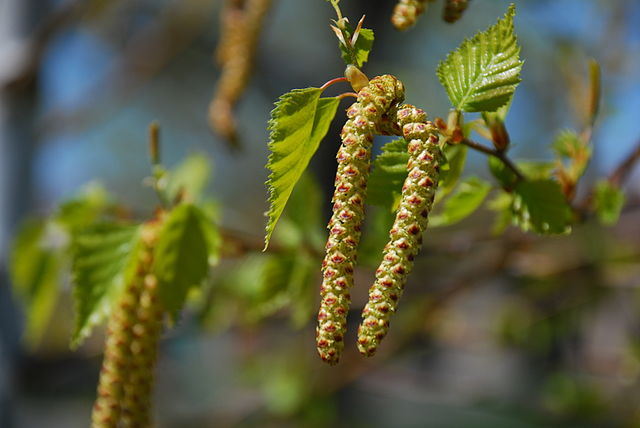
Water birch can be propagated from seeds or cuttings.
- To gather seeds: Simply collect the small, triangular nuts when they fall from the tree in the fall.
- To gather cuttings: Use a sharp knife or pruning shears to cut a 4-6 inch piece of stem from the tree from late spring until the end of summer. Wait at least 6 weeks after the first leaves of the spring to harvest cuttings.
Make sure to cut the stem just below a leaf node (the point on the stem where leaves emerge).
3. Plant the Seeds or Cuttings
If you are using seeds: Surface sow them right away in well-draining potting soil in a seed tray or pots. P.S. Water birch can germinate without cold stratification treatment!
Water the soil, and keep it moist until the seeds germinate, which should take about 1-2 weeks. Keep the trays in a well-lit area.
If you are using cuttings: Dip the cut end in rooting hormone and plant it in a well-draining rooting medium in a pot or tray. Water the soil, and keep it moist until the cutting roots, which should take about 2-3 months.
Recommended rooting medium: Peat moss or sand with perlite mix.
4. Transplant the Seedlings or Rooted Cuttings
Once the seedlings or rooted cuttings are large enough, transplant them to a permanent location in your garden or yard.
Water birch prefers moist, well-draining soil, so be sure to plant it in an area that gets plenty of water.
It can also tolerate partial shade, so it is a good choice for planting under larger trees.
That’s it!
By following these steps, you can successfully propagate water birch and add this attractive, low-maintenance tree to your landscape.
FAQ
Q: Is water birch a tree or a shrub?
A: It commonly grows as a shrub with several outward-spreading trunks, but can reach up to 10 metres in height as a small tree.
Q: Can you plant a water birch next to your house?
A: Place water birches at least 20 feet away from houses or power lines, as local utility companies may need to trim the tree canopy. Additionally, it is important to avoid planting too close to sewer pipes (which can often be found in front yards) as the roots of water birches seek out water and could take advantage of any cracks in an old water line.
Q: Can water birch sit in water?
A: Water birch trees can survive in water-saturated soils, but they need to be planted in an area with good drainage. They should not be submerged in standing water for extended periods of time.
Q: Do water birch trees attract bugs?
A: In the springtime, two common pests – aphids and sawfly larva – can be found on river birch trees. These pests may cause the trees to shed some of their leaves, but they are not a major threat to the tree’s health or to other plants in the area.
